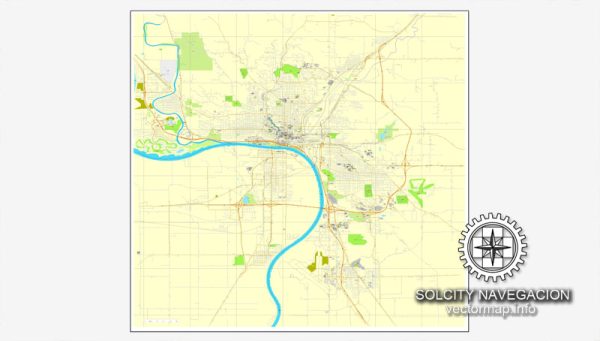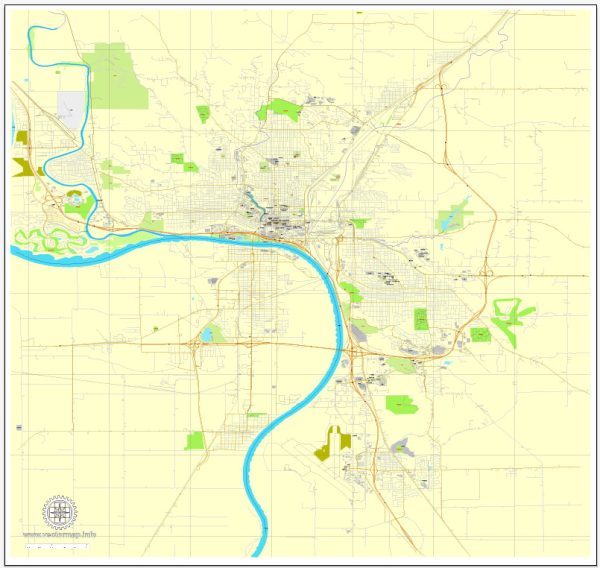Sioux City, Iowa, has a rich history of urban development that dates back to the mid-19th century. Here’s a brief overview of key historical points in the city’s urban development:
- Early Settlement (1850s): Sioux City was initially established as a frontier outpost in the 1850s. Its location at the convergence of the Missouri River and Floyd River made it a strategic point for trade and transportation.
- Railroad Expansion (1860s): The arrival of the railroad in the 1860s played a crucial role in the city’s growth. It facilitated the transportation of goods and people, boosting economic development and attracting new residents.
- Economic Growth and Industry (Late 19th Century): Sioux City became a significant regional hub for agriculture and industry. The meatpacking industry, in particular, thrived, earning Sioux City the nickname “Little Chicago.” The city’s economy was further diversified with the establishment of businesses related to milling, brewing, and manufacturing.
- Downtown Development (Late 19th to Early 20th Century): The downtown area began to take shape with the construction of commercial buildings, banks, and theaters. The architecture of this period, reflected in some remaining historic structures, reflects the prosperity and aspirations of the city during this time.
- Floods and Natural Disasters: Sioux City has faced challenges from flooding due to its proximity to the Missouri River. Notably, the devastating 1952 flood led to changes in urban planning and flood control measures to protect the city from future disasters.
- Post-World War II Growth: Like many American cities, Sioux City experienced significant growth in the post-World War II era. Suburbanization became a trend, leading to the development of residential areas outside the city center.
- Urban Renewal and Revitalization (Late 20th Century): In the latter half of the 20th century, Sioux City, like many cities across the United States, underwent urban renewal projects. Some historic buildings were lost during this period, but efforts were also made to revitalize certain areas.
- Modern Development: Sioux City continues to evolve in the 21st century. The city has focused on infrastructure improvements, cultural amenities, and attracting businesses to enhance its economic base.
- Cultural and Recreational Facilities: The city has invested in cultural and recreational facilities, including museums, parks, and entertainment venues, contributing to a higher quality of life for residents.
- Education and Healthcare: The presence of educational institutions and healthcare facilities has played a role in the city’s growth and development, contributing to a well-rounded urban environment.
Sioux City’s history reflects the broader trends of American urban development, with periods of economic prosperity, challenges, and efforts to adapt to changing circumstances. Today, the city stands as a testament to its resilience and ongoing commitment to progress.



 Author: Kirill Shrayber, Ph.D.
Author: Kirill Shrayber, Ph.D.